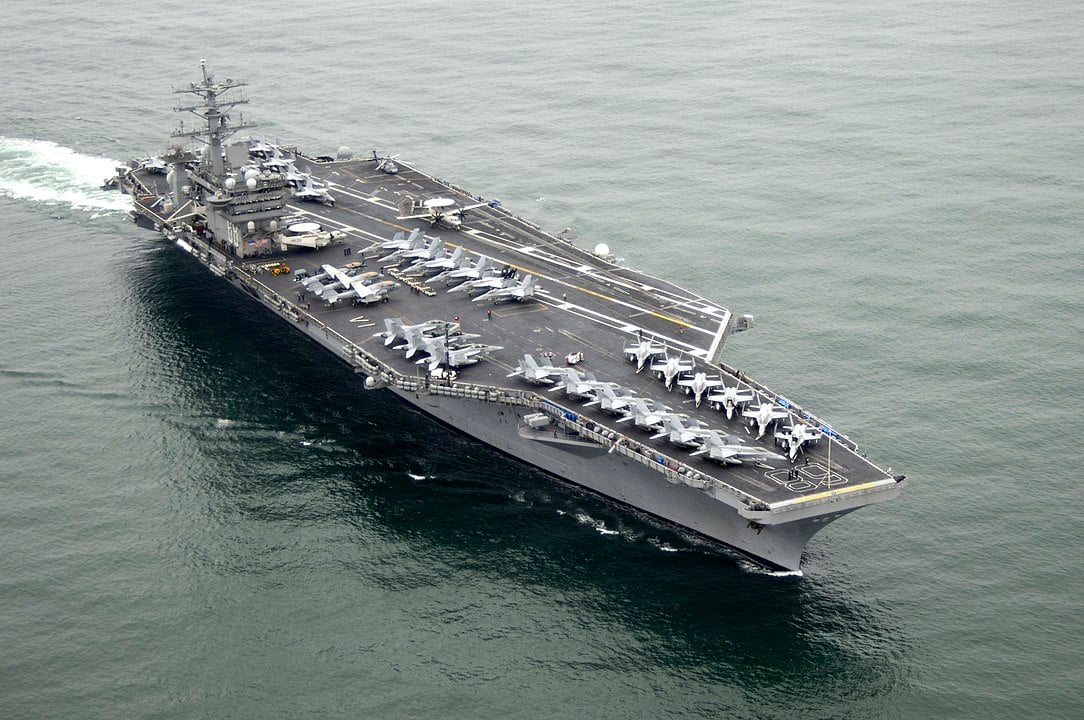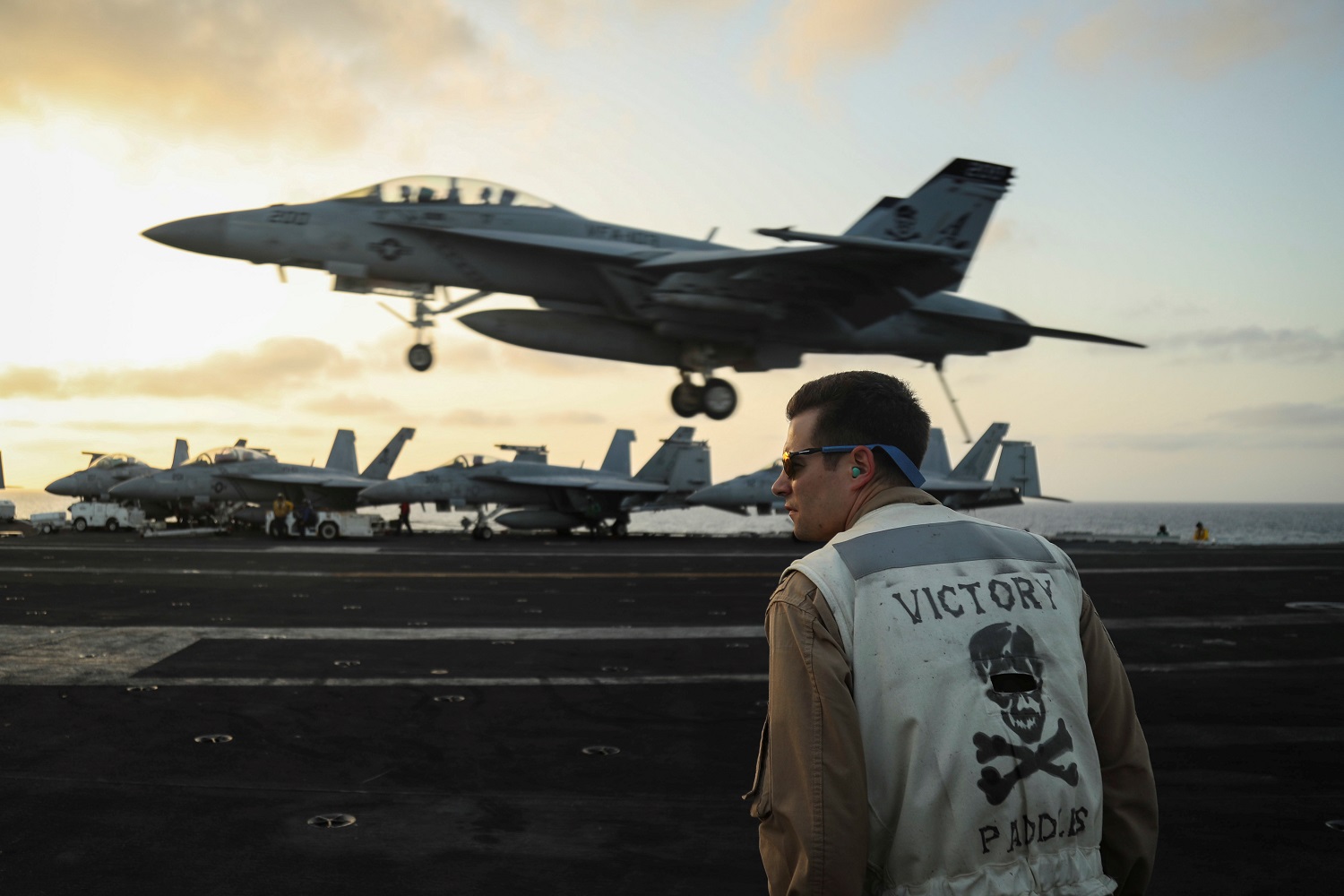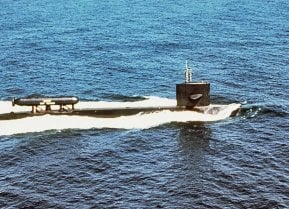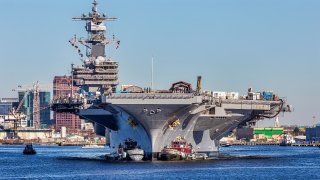Floating Airbase: What Makes the Nimitz-Class Aircraft Carriers So Powerful
The Nimitz-class supercarriers, named after Fleet Admiral Chester W. Nimitz, have been the backbone of the U.S. Navy’s aircraft carrier fleet since the 1970s.
What You Need to Know: The Nimitz-class supercarriers, named after Fleet Admiral Chester W. Nimitz, have been the backbone of the U.S. Navy’s aircraft carrier fleet since the 1970s.

-These nuclear-powered carriers, with their massive size, firepower, and ability to deploy over 85 aircraft, have been pivotal in U.S. military operations such as the Gulf War, the War on Terror, and more recent engagements in the Middle East.
-As these ships approach retirement, the newer Gerald R. Ford-class carriers are slowly replacing them, though the transition is gradual. USS Nimitz (CVN-68) is set for decommissioning in 2026 after 50 years of service.
How the Iconic Nimitz-Class Carriers Transformed U.S. Naval Power
The name “Nimitz” is one of the proudest and most prestigious monikers in the annals of the United States Navy (USN), for two reasons. First was the legendary Admiral, one of the USN’s greatest leaders of the Second World and indeed at any time in naval history. The second reason is the venerable class of nuclear-powered aircraft carriers, supercarriers no less, bearing the Admiral’s name.
Nimitz-Class Namesake: A Brief Bio of Admiral Chester W. Nimitz
Chester William Nimitz was born on February 24, 1885, in Fredericksburg, Texas He graduated with distinction from the United States Naval Academy (USNA) in Annapolis, Maryland on January 30, 1905, seventh in a class of 114. He would eventually immortalize himself during his WWII as Commander in Chief of the U.S. Pacific Fleet (CinCPac), and Commander in Chief, of Pacific Ocean Areas, commanding Allied air, land, and sea forces during World War II., thus responsible for smashing American naval victories over the Imperial Japanese Navy (IJN) during the Battle of Midway. The Battle of the Philippine Sea (AKA “The Great Marianas Turkey Shoot”), and the Battle of Leyte Gulf, to name just a few examples.
After the war ended, ADM Nimitz served a two-year stint as the tenth Chief of Naval Operations (CNO). He retired on December 15, 1947, with the rank of Fleet Admiral five stars, thus becoming the last living U.S. Navy officer to hold that rank. He passed away on February 20, 1966, a few months after suffering a stroke complicated by pneumonia. He was buried with full military honors at Golden Gate National Cemetery in San Bruno, California, alongside his beloved wife, Catherine Vance Nimitz née Freeman. and his lifelong friends ADM Raymond A. Spruance, ADM Richmond K. Turner, and Vice Admiral (VADM) Charles A. Lockwood and their wives.
Nimitz-Class Early History and Specifications
USS Nimitz (CVN-68) was, and still i), appropriately, the lead ship of the Nimitz-class built by Newport News Shipbuilding (NNS), a division of Huntington Ingalls Industries (HII) in Newport News, Virginia. She was ordered on 31 March 1967, laid down on 22 June 1968, launched on May 13, 1972, and commissioned on May 3, 1975. Her motto is “Teamwork and Tradition.”
A total of ten of these warships have been built and commissioned, divvied into three subclasses:
Nimitz Subclass
USS Nimitz (CVN-68)
USS Dwight D. Eisenhower (CVN-69); commissioned in 1977
USS Carl Vinson (CVN-70); commissioned 1982
Theodore Roosevelt subclass
USS Theodore Roosevelt (CVN-71); commissioned 1986
USS Abraham Lincoln (CVN-72); commissioned 1989
USS George Washington (CVN-73); commissioned 1992
USS John C. Stennis (CVN-74); commissioned 1995
USS Harry S. Truman (CVN-75); commissioned 1998 Ronald Reagan subclass
USS Ronald Reagan (CVN-76); commissioned 2003
USS George H.W. Bush; commissioned in 2009
These massive warships bore the following specifications:
Displacement: 101,600–106,300 tons fully laden
Overall Hull length: 1,092 feet (332.8 m)
Beam Width: 252 ft (76.8 m)
Max Navigational Draft: thirty-seven feet (11.3 m)
Propulsion: two Westinghouse A4W nuclear reactors (HEU 93.5%); four steam turbines; four shafts; 260,000 shp (194 MW) Max speed: over thirty knots (56+ km/h; 35+ mph)
Crew Complement: 3,532 commissioned officers and enlisted sailors (ship’s company); 2,480 officers and enlisted (air wing)
Aircraft Carrying Capacity: 85–90 fixed-wing and helicopters
Armament:
2–3 × Mk 29 Guided Missile Launching Systems, 8 × RIM-162 ESSM or RIM-7 Sea Sparrow missiles each
3–4 × Phalanx Close-In Weapon System (CIWS) rotary cannon
two Mk 49 Guided Missile Launching Systems, 21 × RIM-116 Rolling Airframe Missiles each
Mk 38 25 mm Machine Gun Systems
Nimitz-Class Operational History Highlights
Here is where we address what makes this supercarrier class so special. In five words: sturdy, battle-proven, and reliable. Cases in point:
- The Gulf of Sidra Incident of 19 August 1981; two Grumman F-14 Tomcats of Nimitz’s VF-41 shoot down two of then-Libyan strongman Muammar Gaddafi's Sukhoi Su-22 Fitters.
- The Persian Gulf War AKA Operation Desert Storm, January 17.to February 28, 1991; all five ships of the class actively serving at the time participated in the multinational coalition’s ultimately successful campaign to evict then-Iraqi dictator Saddam Hussein’s Iraqi forces from the tiny, oil-rich nation of Kuwait

-Operation Enduring Freedom (OEF), October 7, 2001; Carl Vinson launches the first airstrikes in support of the op, thus kicking off the Global War On Terror (GWOT)
-Operation Inherent Resolve (OIR), June 2017; fighting against the Islamic State/ISIS/ISIL/Da'esh terrorist group in Iraq and Syria, USS Nimitz’s F/A-18 Super Hornets played a vital role in the Battle of Tal Afar, providing precision close air support (CAS) for advancing Iraqi soldiers
The Nimitz-Class’s Future
Slowly but surely, these proud warships are being succeeded by an even bigger behemoth of the carrier world, the Gerald R. Ford-class supercarriers, which are indeed the largest warships in the world, “USS Nimitz is the oldest aircraft carrier in the American fleet. After first sailing in 1975, Nimitz is nearing a half-century of venerable service. But 50 years of salt water, jet fuel, catapult launches, and port calls have taken their toll. Nimitz will be decommissioned in Fiscal Year 2026.”
However, the Ford-class replacements for the remaining vessels of the iconic Nimitz class are coming along rather slowly. Thus far, only the USS Gerald R. Ford (CVN-78) the lead ship of the up-and-coming new class has been commissioned. Next in line is the USS John F. Kennedy (CVN-79), scheduled to be commissioned sometime in 2025.
About the Author
Christian D. Orr is a Senior Defense Editor for National Security Journal (NSJ). He is a former Air Force Security Forces officer, Federal law enforcement officer, and private military contractor (with assignments worked in Iraq, the United Arab Emirates, Kosovo, Japan, Germany, and the Pentagon). Chris holds a B.A. in International Relations from the University of Southern California (USC) and an M.A. in Intelligence Studies (concentration in Terrorism Studies) from American Military University (AMU). He has also been published in The Daily Torch , The Journal of Intelligence and Cyber Security, and Simple Flying. Last but not least, he is a Companion of the Order of the Naval Order of the United States (NOUS).
Image Credit: Creative Commons and/or Shutterstock.


